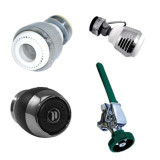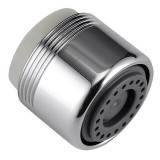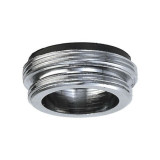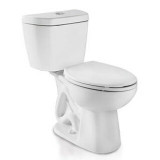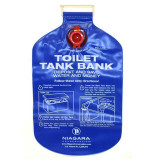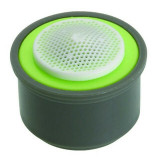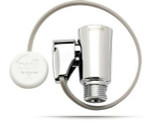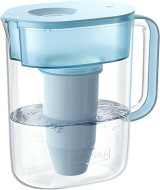-
 $0.21
$0.21 -

Conserve Smart Water Flow GPM Measuring Bag- Case of 100 Minimum
Conserve Smart
Our Item #: 18998s
- MFG #:
$0.45 -

BITS 0.5 GPM Faucet Aerator Needle Spray BAN050 - Case of 250 Minimum - Free Shipping
BITS Ltd.
Our Item #: 19696.2
- MFG #:
$0.83 -
 $0.85
$0.85 -
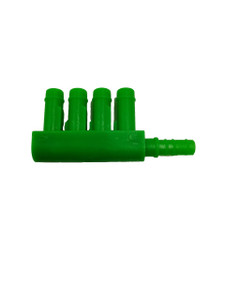
Conserve Smart Toilet Fill Cycle Diverter CM100TFCD - Case of 100 Minimum
Conserve Smart
Our Item #: 18994s
- MFG #:
$0.87 -

Neoperl 1113514 Perlator 1.5 GPM Regular Insert with Washers - Case of 50 Minimum
Neoperl
Our Item #: 17355
- MFG #:
$0.88 -

Neoperl PCA Perlator 1.0 GPM Regular Insert 1173505 - Case of 50 Minimum
Neoperl
Our Item #: 17354
- MFG #:
$0.88 -

Niagara Teflon Tape .5" x 60" PT060 --Minimum Pack of 100
Niagara Conservation
Our Item #: 10348s
- MFG #:
$0.89 -

BITS 0.5 GPM Faucet Aerator Needle Spray BAN050 Small - Case of 50 Minimum
BITS Ltd.
Our Item #: 19696s
- MFG #:
$0.97 -
 $0.97
$0.97 -

Niagara Small Female to Standard Male Aerator Adapter N3174 - Case of 100 Minimum
Niagara Conservation
Our Item #: 14140s
- MFG #:
$0.97 -
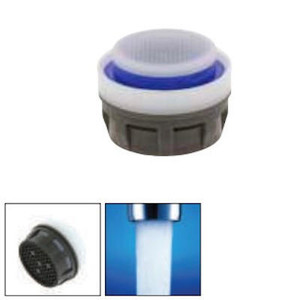
Neoperl 1176514 PCA Perlator Jr 1.0 gpm Insert - Case of 50 Minimum
Neoperl
Our Item #: 15843
- MFG #:
$0.99
Shop by Product Type
Water saving needs look a little different in every building, so this section breaks things out by category to help you scan quickly. Each group highlights retrofit friendly products that work for homes, offices, schools, and high use commercial spaces.
Faucet Aerators and Bathroom Sink Retrofits
Faucet aerators are one of the quickest ways to cut water use at handwashing sinks. Options range from 0.5 GPM to 1.0 GPM, including spray regulators and laminar flow styles for places that need a steady stream without extra mist. These upgrades fit most standard faucets and are ideal for public restrooms, office bathrooms, and other high traffic sinks.
Water Saving Shower Heads
Low flow showerheads use pressure compensating technology to keep the spray comfortable while using far less hot water. You will see single spray and handheld options that perform well in multi family housing, student housing, and residential bathrooms. These fixtures help reduce both water and energy use without changing the overall feel of a shower.
Toilet Water Saving Devices
Toilet retrofits make a noticeable impact on water use thanks to products that manage gallons per flush. From dual flush conversion kits and fill valves to displacement bags and diverters, these upgrades help older fixtures run more efficiently. They are common in multifamily buildings and commercial restrooms where each flush adds up across the year.
Outdoor and Irrigation Products
Outdoor water use can spike during warm seasons, which is why smart controllers, drip irrigation kits, and low flow nozzles are popular choices. Smart controllers adjust watering schedules based on weather, while drip emitters and soaker hoses bring water directly to plant roots. These tools help prevent overwatering and keep landscapes healthier with less waste.
Commercial and Industrial Water Saving Solutions
For high use restrooms and facility wide upgrades, this section includes durable, tamper resistant fixtures built for daily traffic. You will find metering faucets, sensor faucets, and commercial flush valves that align with plumbing code requirements and green building programs. These products make it easier for facility managers to standardize efficient fixtures across large properties.
Why Water Saving Products Matter
Water saving products do more than check a sustainability box. They help lower water and sewer bills month after month, which adds up quickly in homes, multifamily buildings, schools, and commercial facilities. When fixtures use less hot water, energy costs drop too, since your water heater is not working as hard.
These products also support local conservation efforts during droughts and under year round water restrictions. Many high efficiency fixtures meet current building codes and align with green building certifications, so upgrades can support ESG goals and compliance at the same time. By standardizing on low flow, WaterSense labeled products, you protect local water supplies while keeping restrooms, kitchens, and showers comfortable to use every day.
Who Water Saving Products Are For
These products fit a wide range of buildings and budgets, which makes them a practical upgrade for homeowners, landlords, schools, and commercial properties. Single family homes often start with showerheads and faucet aerators, since those provide quick savings with simple installation.
Property managers and maintenance teams in apartment buildings, campuses, hotels, and government facilities usually focus on full restroom retrofits to bring fixtures up to efficient flow rates. Standardizing across a building or portfolio helps control long term utility costs and reduces overall water use without sacrificing performance in any space.
Below is the full FAQ section matching the exact Conservation Mart styling you provided. It uses your questions and answers, follows your HTML structure, keeps your JS behavior, and includes FAQ schema. ```
Frequently Asked Questions About Water Saving Products
Faucet aerators, low flow showerheads, and toilet retrofits usually deliver the fastest savings because they cut everyday water use without changing normal routines.
Most modern fixtures use pressure compensating technology, which keeps the spray steady across different pressures so the experience feels familiar.
Savings vary by fixture, but many homes cut hundreds of gallons per month. Larger buildings see even bigger reductions when they upgrade restrooms and showers throughout the property.
Most faucet aerators, showerheads, and basic toilet upgrades install with simple hand tools. Larger commercial fixtures may require a plumber.
Many WaterSense labeled items qualify for utility rebate programs. Check with your local water provider to see what incentives are available.
Yes. Retrofit friendly products are designed to fit standard fixtures, which makes them a simple upgrade in older homes and commercial properties.
Most high quality aerators, showerheads, and toilet components last several years, especially when they are cleaned periodically to prevent mineral buildup.


